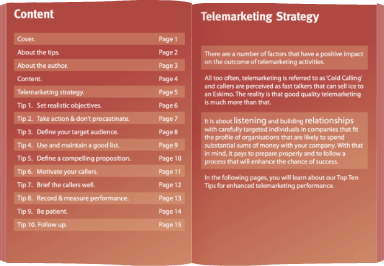Most marketers and salespeople would agree that it makes sense to cultivate storing relationships with their clients. By doing this, it encourages them to spend more. So, why are businesses obsessed with prospecting rather than nurturing?
You might think that the above is a false statement. Yet, with over 20 years experience in the business development world, I can reliably say that very few of our clients really focus on nurturing. They often prefer to chase new business as opposed to cultivating opportunities with customers at hand. That doesn’t mean they ignore their best customers. Rather, they miss opportunities with those on the fringes.
What’s the Best Route to New Business?
The majority of the work we do is prospecting for new business. Our clients typically ask us to help them open doors. And, mostly, this is cold outreach to a fresh audience of target prospects.
You might wonder what the problem is with that. Of course, lead generation is a valid exercise when it comes to the ongoing need for business development. There are very few businesses that genuinely don’t need or want new business. It’s a constant challenge for most marketing and business development managers.So, prospecting is a discipline that is important to most enterprises, large and small.
But what’s the best way to go about it? Is it best to chase new prospects or harness potential opportunities within the existing customer base?
Of course, one option does not negate the other. However, from a standing start, it’s hard to deliver a stack of high-quality, well-qualified, leads where there is an immediate need for products and services. This type of lead doesn’t grow on trees. Yet, targeting high-value new leads may be just what’s needed rather than chasing after smaller fish.
Prospecting is Harder than Nurturing
Whilst prospecting may not quite be like finding a needle in a haystack, there are many factors at play to determine success and ROI. These include the target sector, job role, and the relevance of the proposition, the value of sale and how urgent it is for the prospect to make a change or find a new supplier.
What’s more, this kind of exercise can work out relatively expensive. That’s especially so when compared to generating more revenue from clients that already trade with your business.
A lot of work needs to go into effective lead generation when it comes to fresh prospecting. Often, each lead can take time. That’s fine if the value of sale means there’s a good potential for a return on investment. But, patience is needed.
Retention is Better than Acquisition
It’s a well-used expression that it’s cheaper to retain a current customer than find a new one. So, whilst outreach for new business may need to be on your agenda, it makes sense to consider alternatives alongside pure new business development.
Many companies have large databases. With that in mind, it’s impossible to keep on track of the comings and goings in every client business. Things change. Buyers come and go. And, organisations grow and contract. Therefore, it’s essential to be well-placed when opportunities arise. But, that’s harder to do when it’s 18 months since you were last in touch and that last communication was an email or newsletter.
The larger your customer database, the harder it will be.
Missing Big Opportunities with Current Customers
For many organisations, and their sales and customer service staff, it can be a case of ‘he who shouts loudest’. In other words, attention is devoted to bigger customers and those that are simply more demanding. It’s natural, and profitable, to focus on large accounts. Yet, with internal overhead and resources often under pressure, it can be difficult to keep up with customer demands. So, some potentially valuable customers can feel neglected and slip through the net.
Many will be at risk of deserting to competitors who tempt them with offers.
Relationships Die with Personnel Changes
A further issue can be the frequency of changes in personnel in those companies with which you are not in regular contact. How do you know when buyers change? Unfortunately, those situations often lead to a weakening of the relationship. Ultimately, this leads to customer attrition. What’s more, without reasonably frequent contact, it’s probable that you’ll miss opportunities to do more business. How do you know which companies have the potential for growth? And, when might purchasers be in the market for other solutions you offer?
Emails and newsletters can only take a business so far. Peer-to-peer interaction is what’s needed? That means a call and/or a visit.
Profiling and Segmentation
So, what’s the answer? The best approach is to take a good look at the data sitting in your systems to ensure that you have accurate contact details. It’s also important to consider the other information you hold on each customer. What do you know about their business? How can you best profile their needs if you don’t know anything about them?
The more information you can gather about the business the better. Whilst you don’t need to write a book on each company, profiling by sector, number of employees, type and other key parameters will help you assess their potential.
Don’t forget to consider the last order date since this will probably determine the warmth of the relationship. And, of course, order value and the type of products and services purchased can also be revealing.
Beware though that past order value may not denote potential order value. Just because they only ordered a small amount in the past doesn’t mean it will always be like that. It may be that a proportion of their spend is with a competitor and you aren’t aware of this.
Work out your Best Approach
Once you have determined these key elements, you can categorise customers into A, B and C targets or whatever breakdown suits you best. Perhaps, your key account team already deals with the larger clients. Maybe they aren’t even on this list since they are handled elsewhere in the organisation. It may just be companies below a given order value that you profile like this.
You then need to consider how to approach and nurture these targets. If you have limited internal resources, the temptation may be to simply send an email. If these are low-value customers, and you can validate that, this may be the best approach. Yet, the most sensible option is often a call to qualify them, to ascertain their needs and to develop the relationship.
It may be that a multi-channel approach will pay dividends. That means reaching out via email and phone and even connecting via LinkedIn. However, given that these are existing customers, a positive customer care call might simply be the way to best unlock their potential.
Think Ahead for Profit
If you have the manpower to accomplish this using your in-house team, decide on a timeframe and set them to work on the process. Make sure that they record the information in a systematic manner on your CRM system that allows you to further analyse the output from their work. Good notes are essential. Some form of scoring would probably be useful. It will allow you to classify them by opportunity and split them up for account management to follow-up.
If you don’t have the staff to do the exercise in a reasonable timeframe, perhaps consider an outsource solution such as an agency like GSA to take the task in hand and to provide the output seamlessly and swiftly.
Any cost associated with this kind of exercise should be set against the cost of not doing it. That’s to say the cost of losing clients to competitors. Also, it’s important to balance with the cost of other marketing to generate new business. Ultimately, if you believe there may be big potential lurking in your unloved customer database, take time to run a customer campaign and you will see the benefits.






